Jen Black's Blog, page 28
March 3, 2020
My new hobby

They say, if you go back far enough, each one of us has a shared ancestor with every other person on earth. Scientists estimate that the most recent common ancestor of all humans, probably lived in either Egypt or Babylonia during the classical period. Evidently, we can all trace our ancestry back to this person.Assuming an average generation time of 20 years, this means that we are all 120th cousins, descended from someone that was alive when the pyramids were already aging structures. (Many millions of other people living at that time also have living descendants, of course. The last common ancestor is simply the one who is an ancestor to all of us, in addition to our many other ancestors who are not common to everyone.)Of course, within a given ethnic group, the most recent common ancestor will be much more recent than that, especially so within a limited geographical area with low ethnic diversity. Remember that, randomly, some people leave many descendants and others leave none. If you take a country like Scotland, Sweden, or Poland, you really don’t have to go back very far before you discover someone that is a shared common ancestor to the vast majority of living citizens. For example, in the lands of the former Mongolian empire, around 8% of the population are direct descendants of Genghis Kahn and that goes less than 800 years back. Even as far away as North America, around 0.5% of men carry the Y-chromosome of the great Kahn.Many millions of Americans of Irish ancestry trace their families back to a specific county in Ireland, but the reality is that, if you’re Irish, you are related to all other Irish people and probably a lot more closely than you think.In fact, everyone on earth with any trace of European ancestry probably has a shared ancestor who lived in the early Middle Ages. Charlemagne has been proposed as a possible candidate.Family trees aren’t correct anywayOne thing that Ancestry.com won’t often tell you is that the genealogy that you discover may not be accurate anyway. Inferences have to be made when you are dealing with records that are hundreds of years old. There are many surnames and first names that are quite common. There is no way to be sure that the “Jacob Carter” that turns up in one record is the same “Jacob Carter” that shows up in another from fifteen years later, even in the same general area.Then, as now, many families were on the move. An isolated census record containing only a name is nothing more than a low-resolution snapshot. There is no way to know how many links and associations that genealogy reveals are simply coincidence.Furthermore, over the past two centuries, it was not uncommon for last names to be changed, misspelled, or misattributed. Records were frequently lost, recreated, or even forged. We think of our identities as relatively fixed now because we have traceable identification cards, birth certificates, and social security numbers from a very early age. But none of that existed until recently.There is a long article, with an America slant, you may wish to read on this topic
:
Nathan H. Lents, Ph.D., is a professor of molecular biology at John Jay College, of the City University of New York.
Published on March 03, 2020 01:52
February 25, 2020
Finding the way forward
Next time I start a new book, this is what I’m going to do!
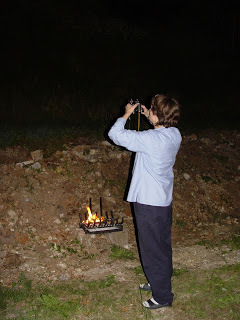 Finding the way
Finding the wayOpen with a hook. It is the chance to grab the reader and show them the quality of my writing. Wonderful writing alone won’t do it, though; there must be something that makes the reader want to read on to see what happens next. How whoever it is will dig themselves out of this hole they’ve fallen into….
Next step is to introduce your main characters, their aspirations and goals, and their setting. Where are they? Sometimes these days when are they is as important as where!
Then there must be the inciting incident. Think of it as a fuse that sparks off your story. Sometimes along with this comes what authors like to call the Call to Adventure. It should at the very least be soon after your introductions. Get the protagonist involved in the story – whatever you make the character do will be a direct reaction to the inciting incident, ecen if their first reaction is to baulk and not answer it.
The first move they make is the first plot point and marks the end of the beginning section of the novel. It also marks the beginning of the rest of the story. From then on there is usually a major escalation or a setback of some kind, which forces the protagonist into further action.
Think of it as a list:INTRODUCTIONSINCITING INCIDENTCALL TO ADVENTUREFIRST PLOT POINT
And you are on your way!
Published on February 25, 2020 07:14
February 20, 2020
Cheers!
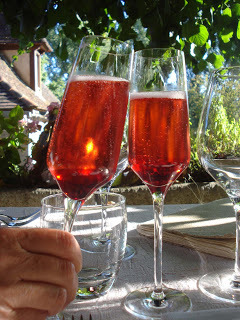 Drunkenness was not uncommon in Anglo-Saxon England.
Drunkenness was not uncommon in Anglo-Saxon England.In the early medieval period people brewed with barley and wheat and the names beer and ale were applied to the drink. somewhat indiscriminately. If there was a difference between them it may have been that beer contained aromatic herbs while ale remained "pure."
By the 10th centry beer described the sweet new wort barely fermented. "Beor" was said to be honey-water (hydromel), a Greek name which in Latin translated as mead. Ale was the common name for malted liquor.
The Anglo-Saxons were great ale drinkers, with an ale house in every village, selling bright ale (the dregs well settled), mild ale, and extra-strong twice-brewed ale. Rosemary, yarrow, betony, gale and bog-myrtle were infused in ale and drunk medicinally as well as for flavour and preservation purposes. Mixed herbs known as "gruit" were added to ale in Germany and hops finally became the ideal ale-herb.
Welsh ale or "cwrw" retained its individual smoky taste until the end ot he 18th century and often figured in food rents in Anglo-Saxon England. "Bragot" was a honey and spiced ale drunk at theWelsh court.
Mead was the warrior's drink for both Celt and Saxon. It was also a celebratory drink in peace time and more readily available than wine until well after 1066. Wine drinking diminished after the Roman legions left, but gradually Rhenish wine from Cologne and French wine from Rouen established trade routes into England.
Milk, buttermilk, whey and water were the non-alcoholic drinks. Bede quotes King Edwin of Northumbria marking the sites of clear water springs at roadsides by means of a post with a bronze cup suspended from it.
Published on February 20, 2020 02:12
February 15, 2020
Food Matters
 The potato is indigenous to Chile and the Andes. Everyone thought the potato came from Virginia, and that was because when Sir Francis Drake stopped in Virginia to pick up English settlers, he had potatoes from Cartagena in Columbia on board and introduced them to England. It had reached Spain around 1570.
The potato is indigenous to Chile and the Andes. Everyone thought the potato came from Virginia, and that was because when Sir Francis Drake stopped in Virginia to pick up English settlers, he had potatoes from Cartagena in Columbia on board and introduced them to England. It had reached Spain around 1570.Rumour says that the vegetable found its way into Ireland by virtue of the looting of a ship’s store from a wrecked Armada vessel around 1588. Alternatively, the Irish claim Sir Walter Raleigh brought it.
The potato was initially not widely used in England, but the Irish took to them whole heartedly. They were easier to grow than oats or barley and easier to hide in an underground store when soldiers prowled the land.
By the 17th century potatoes were grown in Lancashire and by the 18th their use was spreading through the rest of the UK, at first as a garden and later as a field crop, even reaching the highlands of Scotland.
At first they were used as a delicacy and if they were of the sweet potato variety, almost a sweetmeat, but it was not long before they became the traditional boil, roast or fried vegetable we all know. By that time the use of pottage had declined, or the potato would undoubtedly have become the main pottage ingredient.
Published on February 15, 2020 02:43
February 12, 2020
Pottage, anyone?
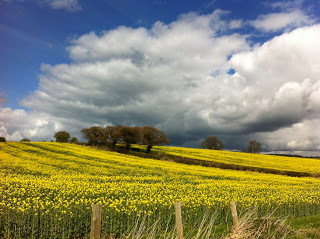 Young green peas were cooked in a beef broth flavoured with parsley, sage, hyssop and savory to produce pottage in medieval days. Old dried peas were cooked with bacon stock and eaten afterwards with bacon. meat if you had any. The labourer's family without bacon made do with oatmeal, flour or breadcrumbs to thicken it. This thick pease pottage remaned a basic country dish for several hundred years; in fact, we still have it in our home today, usually with some ham and a ham stock cube.
Young green peas were cooked in a beef broth flavoured with parsley, sage, hyssop and savory to produce pottage in medieval days. Old dried peas were cooked with bacon stock and eaten afterwards with bacon. meat if you had any. The labourer's family without bacon made do with oatmeal, flour or breadcrumbs to thicken it. This thick pease pottage remaned a basic country dish for several hundred years; in fact, we still have it in our home today, usually with some ham and a ham stock cube.Pottage was a staple of the English diet, came in many varieties. and was eaten by rich and poor alike Onions were the most popular ingredient and demand outstripped supply so that the vegetable and the seed were importd from the Netherlands and even Spain. Garlic was also imported.
Many other broad green leaves went into it, plants we are not so familiar with today: orche, clary, mallows, patience dock, borage and bugloss. Flavourings included parsley, sage, thyme, mint in all its forms, and fennel . In the medieva period, people chopped up the parsley root fas well as the leaves and stalks for pottage. A 15th century housewife grew no less that 48 herbs - though we cannot assume that every housewife grew all of them! Many were gathered from the wilds - such as dandelion, daisy and red nettle. All this greenery should have been very healthy but unhappily the pottages were cooked for so long that all the goodness of Vitamin C would have been destroyed .
Parsnips, carrots, radish, turnip and rape were grown in gardens as these root vegetables were not yet grown as field crops. Rape seeds were used as a cooking oil among the less well-off. Dutch immigrants began growing rape in south east England in the Tudor period; before that, the seed was imported from Flanders.
Published on February 12, 2020 03:56
February 6, 2020
Can't see the wood for the trees?

“Time is our enemy. Most people don’t have enough. This is why our writing must be tight, direct and hook early. Modern audiences have the attention span of a toddler hopped up on Pop Rocks and Mountain Dew. We can’t afford to let them drift.” So says Kristen Lamb in Uncategorized, Writing TipsHere are some of the reminders I keep for myself –1. Describing what a character sees can be overdone and more importantly, keeps the reader at a distance, makes her a mere observer and not a participant. Sight is possibly the weakest sense and doesn’t help pull your reader into deep POV. SO: Don’t rely on a lot of description.
For many, the sense of smell is the most powerful sense, followed by tasteTry to use a combination of all the senses.
2. Don’t have body parts doing things. You don’t need a character to raise his hand to reach for the door handle. If he makes it from one room to another, the reader will fill in the details.
3. Don’t State the Obvious She slammed the door and cursed in anger. We know she’s angry because she slammed the door. Telling us she’s angry is redundant.
4. Don’t bring in too many characters too soon. If you have ten named characters by page one your reader will be confused.
5. Too Much Anything v Give Us a Sense of Time and PlaceThis happens with historicals as much as science fiction and fantasy. If the readers get lost in all the characters, places, clothes, prophesies, weapons, technology, dragons, ships and robots, it is bad. A few details are helpful to orient us where we are– maybe the smell of horse manure, the rattling of carriages or the whir of computers. The readers need to be grounded quickly and easily to become part of the world.
6. From page one, the reader should have picked up the basics about a character.
7. Tighten the ProseOveruse of the word “was” is an indicator of weak writing and passive voice. If a writer does this on page one it is likely it will continue.
Published on February 06, 2020 05:32
February 2, 2020
The Duties of Servants
I bought a book a long time ago entitled The Duties of Servants.
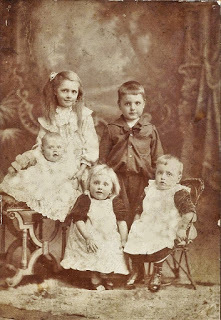 I think I discovered it in one of the National Trust bookshops and is an updated version of something published in 1894. The forward claims that this work appeals equally to both mistress and servant. A mistress will gather from its pages the actual services she is entitled to demand from each servant; the servant will learn of what his or her duties strictly consist.
I think I discovered it in one of the National Trust bookshops and is an updated version of something published in 1894. The forward claims that this work appeals equally to both mistress and servant. A mistress will gather from its pages the actual services she is entitled to demand from each servant; the servant will learn of what his or her duties strictly consist.
It seems the house steward is the top dog, as he engages and dismisses both men and women servants. Where there is no house-steward at the head of the household, the housekeeper engages and dismisses female servants and the butler the indoor male servants.
The master and mistress engage their own personal attendants such as the valet, lades-maid and nurse.
if there is no housekeeper then the mistress engages female servants and the master engages the butler and footmen. If the butler is trusted, he is allowed to engage and dismiss footmen.
The line continues down through smaller and smaller establishments. This little book is going to prove invaluable for my latest project! Although 1911 is not strictly Edwardian, there is much that is still present of that period even though a coronation of George V is about to take place in June of that year. There were many in the upper echelons of society who felt that nothing should ever change, that their lovely way of ife should go on and on and history tells us of a huge number of parties given that year.
 I think I discovered it in one of the National Trust bookshops and is an updated version of something published in 1894. The forward claims that this work appeals equally to both mistress and servant. A mistress will gather from its pages the actual services she is entitled to demand from each servant; the servant will learn of what his or her duties strictly consist.
I think I discovered it in one of the National Trust bookshops and is an updated version of something published in 1894. The forward claims that this work appeals equally to both mistress and servant. A mistress will gather from its pages the actual services she is entitled to demand from each servant; the servant will learn of what his or her duties strictly consist.It seems the house steward is the top dog, as he engages and dismisses both men and women servants. Where there is no house-steward at the head of the household, the housekeeper engages and dismisses female servants and the butler the indoor male servants.
The master and mistress engage their own personal attendants such as the valet, lades-maid and nurse.
if there is no housekeeper then the mistress engages female servants and the master engages the butler and footmen. If the butler is trusted, he is allowed to engage and dismiss footmen.
The line continues down through smaller and smaller establishments. This little book is going to prove invaluable for my latest project! Although 1911 is not strictly Edwardian, there is much that is still present of that period even though a coronation of George V is about to take place in June of that year. There were many in the upper echelons of society who felt that nothing should ever change, that their lovely way of ife should go on and on and history tells us of a huge number of parties given that year.
Published on February 02, 2020 08:45
January 23, 2020
Is it a bestseller?
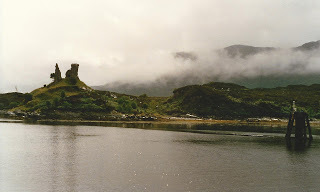
How do manuscripts become bestsellers?
Possibly via a referral or through the “slush pile”.Rumours claim agents don’t read their “slush pile,” but ignoring unsolicited submissions could mean missing out on the next big thing. Agents read new manuscripts from existing clients first. Next those that arrive highly recommended from clients. Interns and assistants comb through the remaining slush pile submissions and identify certain projects as having promise.Clues in a query letter sometimes indicate that someone is worth closer attention. So what will prompt an agent to go for a ms? Good, confident writing. High-concept, ambitious stories. A new voice – something that feels like it simply hasn’t been done before – is a good way to grab attention.Say the agent comes upon a brilliant ms, and decides to take on the author as a client. What happens next? The agent and the author will take some time to polish the ms together. Then, the agent chooses the "right " editor at a publishing house. Editors are the people who will acquire the ms for publication. Mainstream editors don’t usually accept queries from authors, only from agents, who have honed their pitching techniques for years.The pitch - when calling the editor to describe a book is vital. The rapport between agents and editors is vital but little known, built up through regular phone calls, through lunches and coffees over the years so agents know who to call on a specific project. Picking the right editor and the right way to pitch a book is crucial.An agent will prepare a proper pitch, clarifying which kind of readers a manuscript is likely to attract, or comparing it to existing titles. A single editor working full-time will take on six to 10 novels a year on average. The volume of offerings has increased drastically over the years. It’s not uncommon for an editor to receive four to eight manuscripts a day.Fiction is so subjective and may not appeal to an editor who will have to work on it for two years. One editor claims it is all about the voice.A book should grab the reader immediately. Too often submissions are either beautifully written with no story, or all story but the writing is lacklustre. People underestimate just how hard it is to do both and do both successfully.
See part 2 in the next post.
Published on January 23, 2020 02:41
January 20, 2020
Staff of Life and all that
Do you know what pottage is?
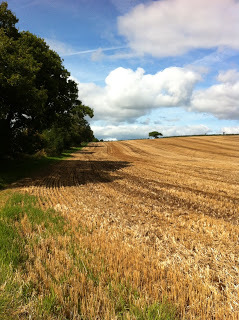
In medieval days pottage, bread and ale were the backbone of everyone's diet. We are told by Andrew Boorde (1542) that "pottage is made of the liquor in the which the flesh is sodden in, with putting-to chopped herbs, and oatmeal and salt."
The object was to produce a semi-liquid but thick spoonmeat.
Cereal pottage was based on the breadcorn of the region - rye, wheat, or a combination of the two, often called maslin; barley, oats or dredge-corn (again a mixture of the last two). These might be ground at home with a hand quern or in a mortar. Both resulted in rough grain. Later this became illegal as it was said to deprive the manorial mill of its dues.
Once this was done, the mixture was washed and then boiled until it was tender and brown. Some recipes had the grains boiled, cooled and then mixed with cows' milk and a beaten egg stirred in. This earned the name "Frumenty." Rich folk ate it with venison or porpoise. Poor folk ate it as a breakfast or supper dish, with little else but for milk or a little cream or butter if it was to be had. Gruel was oatmeal boiled in water.
In Scotland the cereal pottage was brochan - the old Gaelic word for oatmeal porridge, and sometimes eaten with kail and/or onions. The dalesmen of the Pennines and the Welsh ate a similar oatmeal or oatmeal and barley mixture. In the south of England oatmeal became a favourit thickener for meat and herb pottages as well as breadcrumbs or "amidon," a wheat starch very much like Cato's amulum of sixteen hundred years before.
"Drawn gruel" contained lean beef, boiled and pulled to draw out the gravy, and with the addition of oatmeal, parsley, sage, and salt. "Forced" gruel had pork added, once it had been worked to a pulp in the mortar. Eggs were sometimes added, but considered rather extravagent.
Rice from the south of Europe was added to pottage, too. It came with the spice ships from the Mediterranean and the Countess of Leicester used 110 pounds of it in four months during 1265. In a smaller household, the record show only 3 pounds of rice used in the whole year 1419.

In medieval days pottage, bread and ale were the backbone of everyone's diet. We are told by Andrew Boorde (1542) that "pottage is made of the liquor in the which the flesh is sodden in, with putting-to chopped herbs, and oatmeal and salt."
The object was to produce a semi-liquid but thick spoonmeat.
Cereal pottage was based on the breadcorn of the region - rye, wheat, or a combination of the two, often called maslin; barley, oats or dredge-corn (again a mixture of the last two). These might be ground at home with a hand quern or in a mortar. Both resulted in rough grain. Later this became illegal as it was said to deprive the manorial mill of its dues.
Once this was done, the mixture was washed and then boiled until it was tender and brown. Some recipes had the grains boiled, cooled and then mixed with cows' milk and a beaten egg stirred in. This earned the name "Frumenty." Rich folk ate it with venison or porpoise. Poor folk ate it as a breakfast or supper dish, with little else but for milk or a little cream or butter if it was to be had. Gruel was oatmeal boiled in water.
In Scotland the cereal pottage was brochan - the old Gaelic word for oatmeal porridge, and sometimes eaten with kail and/or onions. The dalesmen of the Pennines and the Welsh ate a similar oatmeal or oatmeal and barley mixture. In the south of England oatmeal became a favourit thickener for meat and herb pottages as well as breadcrumbs or "amidon," a wheat starch very much like Cato's amulum of sixteen hundred years before.
"Drawn gruel" contained lean beef, boiled and pulled to draw out the gravy, and with the addition of oatmeal, parsley, sage, and salt. "Forced" gruel had pork added, once it had been worked to a pulp in the mortar. Eggs were sometimes added, but considered rather extravagent.
Rice from the south of Europe was added to pottage, too. It came with the spice ships from the Mediterranean and the Countess of Leicester used 110 pounds of it in four months during 1265. In a smaller household, the record show only 3 pounds of rice used in the whole year 1419.
Published on January 20, 2020 02:55
January 16, 2020
Veterinary Blues
 We seem to be spending a lot of time with the veterinary in Hexham this week.
We seem to be spending a lot of time with the veterinary in Hexham this week.On Tuesday he had a lump taken from his leg because an earlier biopsy suggested dodgy cells were present. Today we have been back to have the dressing checked.
I woke last night to find he had somehow licked the bandage down, revealing the wound, so we looked rather shame-faced this mornrng but Hey! the nurse says the wound is healing well and there's no damage done.
Have you ever tried to prevent a dog from licking his wound excessively? It's 2am and you wake to the sound of surreptitious licking and you stop him. Happens again, and again at three am. You know the cone of shame is in the loft and you are not prepared to go find it in the dark.....He is doing this to annoy me....stamp downstairs, grab his muzzle and go back to bed. He may hate the muzzle but he can't chew the newly healed wound now. I sleep and wake with a jerk next morning as he whimpers pathetically. Feel guilty, and give lots of cuddles.
So now he has a 3x4 inch plaster stuck on his left foreleg but no bandage. (Can you even see it? It is white...) Maybe he'll find this easier to accept. I hope so. I badly need a good night's sleep!
Published on January 16, 2020 03:48
Jen Black's Blog
- Jen Black's profile
- 6 followers
Jen Black isn't a Goodreads Author
(yet),
but they
do have a blog,
so here are some recent posts imported from
their feed.



